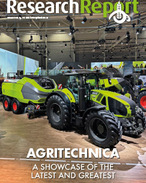This article is 5 years old. Images might not display.
That's the message from Agriculture Victoria dairy extension officer Michele Jolliffe, who said when using inoculants, it is important to mix and apply them as stipulated by the manufacturer as each product has different requirements.
"Some products require a set time and conditions for the batch to build up bacterial numbers to the required level," Joliffe said.
"Other inoculants that are freeze dried already have the required number of bacteria in the satchel and don't need time to build up numbers. Make sure that inoculants are stored in a cool, dry place and avoid leaving them in hot conditions as they break down very quickly."
Silage inoculant and aerobic spoilage inhibitors are two options available for farmers to help improve the quality of silage.
Silage inoculants are the largest range of silage additives currently used in Australia. Inoculants are manufactured populations of desirable lactic acid producing bacteria, which are essential to produce the sweet smelling, highly palatable silages.
When bacteria such as Lactobacillus and Pediococcus, are added to a harvested crop, they increase their own populations to support the naturally occurring bacteria and can help to out compete less desirable bacteria. This results in a quicker fermentation of the silage, which will rapidly preserve the crop and reduce dry matter and quality losses.
Suited to most forage crops, silage inoculants are very useful when a crop hasn't reached the required dryness and needs to be ensiled quickly to beat poor weather conditions.
The crop must not have been on the ground longer than three days. Any longer and the plant sugar levels will be too low for inoculants to work.
Silage inoculants assist in the fermentation process of silage making, whereas aerobic spoilage inhibitors work by delaying the onset of silage spoilage such as heating and mould growth causing lost dry matter, quality and palatability.
"If wilting and harvest of the forage occurs within one to two days and the stack or bales are compacted very densely and sealed airtight after harvest, aerobic spoilage inhibitors are not really required," Joliffe said.
Aerobic spoilage inhibitors are designed to be applied at harvest, just like silage inoculants, and require thorough mixing throughout the forage to work effectively. They can be very useful in maize and whole crop cereal silage.
They are also useful where pit silages require several days to feed out across a face or where silage is left in a mixer or silage cart overnight.
"It's important to consider what you are wanting from either product. If you wish to speed up the fermentation process, then silage inoculants are an obvious choice. If you have silage sitting in a silage cart or mixer for an extended period than aerobic spoilage inhibitors are the better option.
"The key thing to remember is neither product will improve the quality of silage if corners are cut during the ensiling process."























